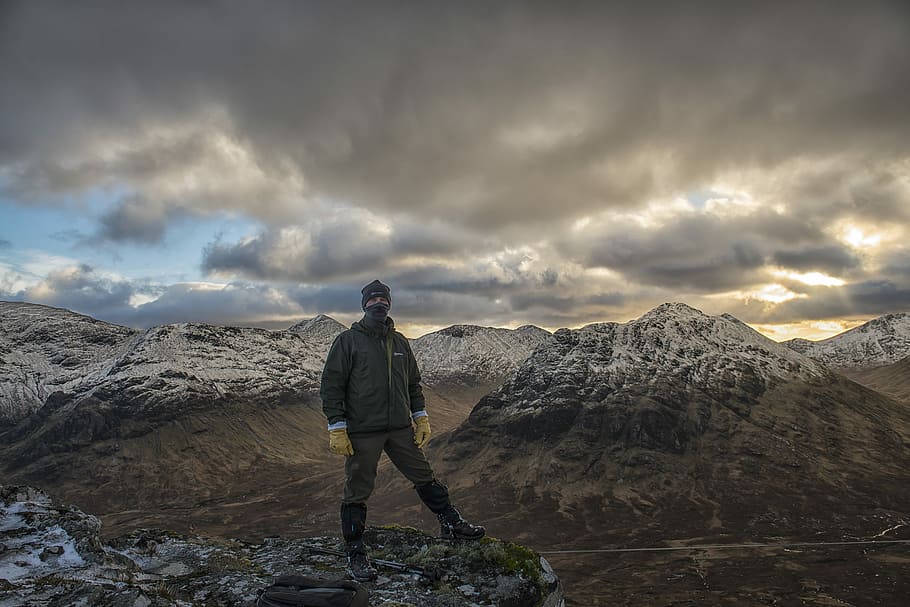
May 6, 2020, by Brigitte Nerlich
Pandemic landscapes: Peaks and tunnels, waves and plateaus
Since the beginning of the Covid-19 pandemic I have collected metaphors used to talk about it. First there were metaphors for the virus and for what to do about the spread of the virus and so on. Then there were metaphors of lockdowns, confinement and imprisonment but also more hopeful ones of journeys. Now metaphors centre around getting out of the pandemic prison, on exiting the lockdown, on easing and lifting it, finding a new ‘roadmap’ and so on.
Alongside these experiential metaphors there are also metaphors based on less visceral pandemic experiences, metaphors that try to bring maths, modelling and graphs down to earth, such as flatting or crushing the curve. As the Guardian wrote in early March: “A key goal of public health officials now is to avoid a huge peak in Covid-19 cases in favour of a slower growth that becomes a moderate plateau. Infections still occur, but over a longer period – and ‘flattening the curve’ turns the steep mountain of cases into a more sedate hillock.” We’ll come back to the plateau… as one of a smattering of what I call ‘landscape metaphors’ of the pandemic.
Curves are of course also waves and we are now hearing a lot about how important it is to avoid a second wave of Covid-19 cases and deaths. Fears about a second wave in Europe are increasing at this moment, a wave or surge that could come at the end of the summer. It would be better to avoid that and try to create a situation, through testing and tracing, of a series of “mini-waves”….
Peaks and tunnels
It is rare to find creative extensions of such metaphors, but Boris Johnson is always good for some of these – remember his talk of squashing the sombrero (for flattening the curve). This was brought home to me yet again when listening to the Prime Minister’s first speech after his recovery from Covid-19. He was, probably understandably, quite euphoric, not only about himself but about the country, as cases of Covid-19 were gradually coming down. He said (on 30 April):
“We’ve come through the peak, or rather, we’ve come under what could have been a vast peak, as though we’ve been going through some huge Alpine tunnel. And we can now see the sunlight and the pasture ahead of us. And so, it is vital that we do not now lose control and run slap into a second and even bigger mountain.” He also said that we are “on a downward slope”. As Politico said: “Boris Johnson is back and he has metaphors.”
This was, one should say, in the context of the UK being one of the worst-hit countries in the world, with the highest death-toll after the United States. One may therefore wonder who will see, who will be able to afford to “see the sunlight and the pasture ahead of us”.
Peaks and plateaus
At the same time (1 May) I also got my Coronadaily from Cronycle which this time had the title “Vigilance on the plateau”, creatively extending a metaphor that is used to talk about the fact that numbers of deaths, for example, are stubbornly staying at the same level. The blogger mentions a thread by Trevor Bedford called “The long plateau”. Trevor thinks that in the US it is ”quite possible that, nationally, we’re in for a scenario of a long plateau” rather than a second wave. To avoid a second wave and to shorten the long plateau, I assume, we need continued social distancing, testing, tracing and, above all, ‘vigilance on the plateau’.
The Cronycle also reported on a report by Sharon Begley who writes about three Covid-19 scenarios. Scenario 1 is called “Peaks and valleys”: “In this scenario the main (and current) peak is the highest and we have several smaller and sequential peaks to follow. There would likely be reinstatement of mitigation measures of various strength for the subsequent peaks.” (see mini-waves above) The second scenario is an autumn peak and the third a ‘slow burn’.
Conclusion
We will have to see how long we’ll have to stay on the plateau, away from the peaks, when and whether we see a big second wave, various mini-waves or a slow burn. Most of all we’ll have to wait and see when we can walk out freely again into non-metaphorical peaks and valleys or enjoy swimming in real waves. We can dream about ‘sunlit pastures’, but the we need to be vigilant on the plateau.
Image: Google images: Labelled for reuse: Man standing on cliff
Previous Post
Pandemic poetryNext Post
VE Day – a poem by Maureen SuttonNo comments yet, fill out a comment to be the first

Leave a Reply